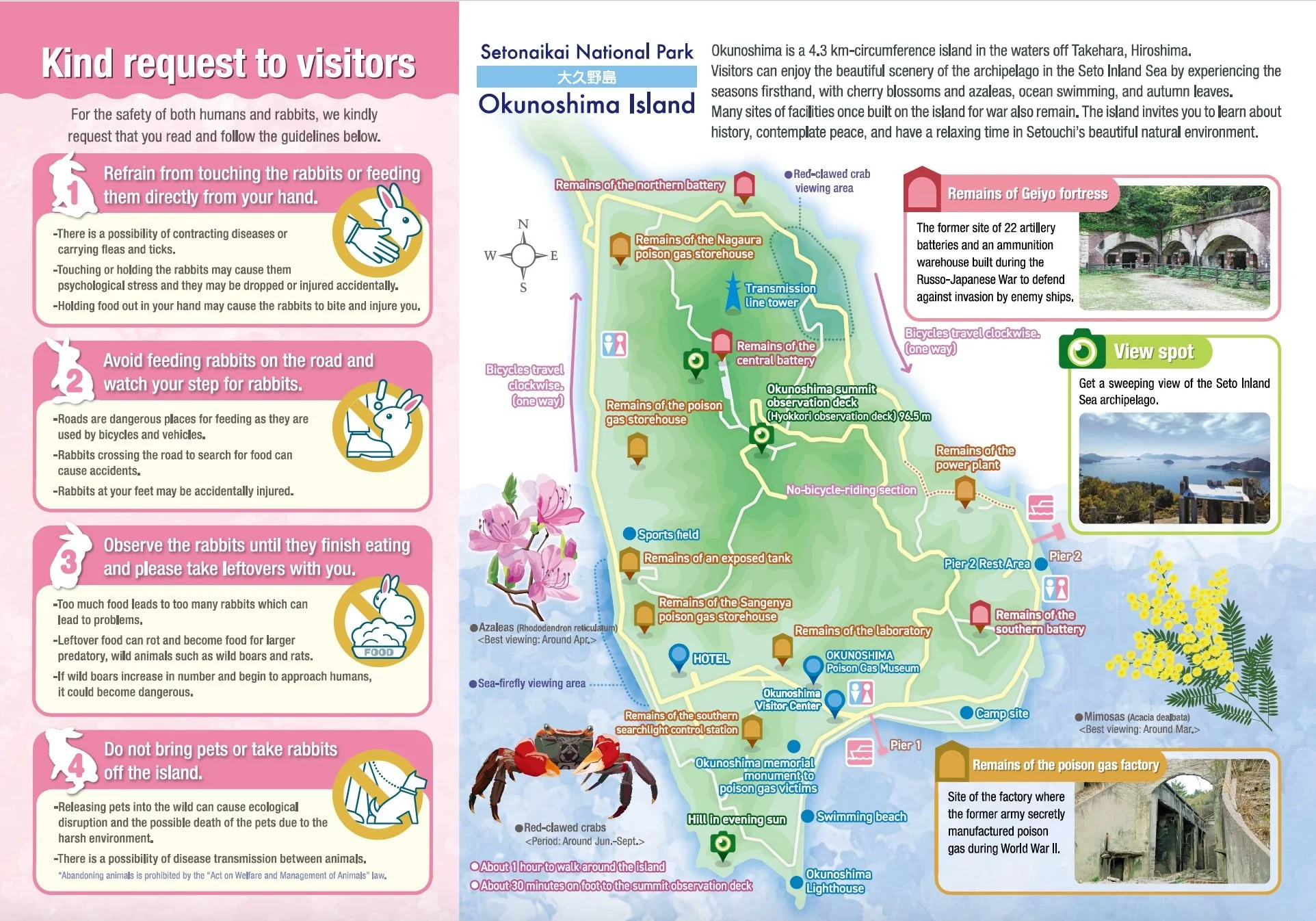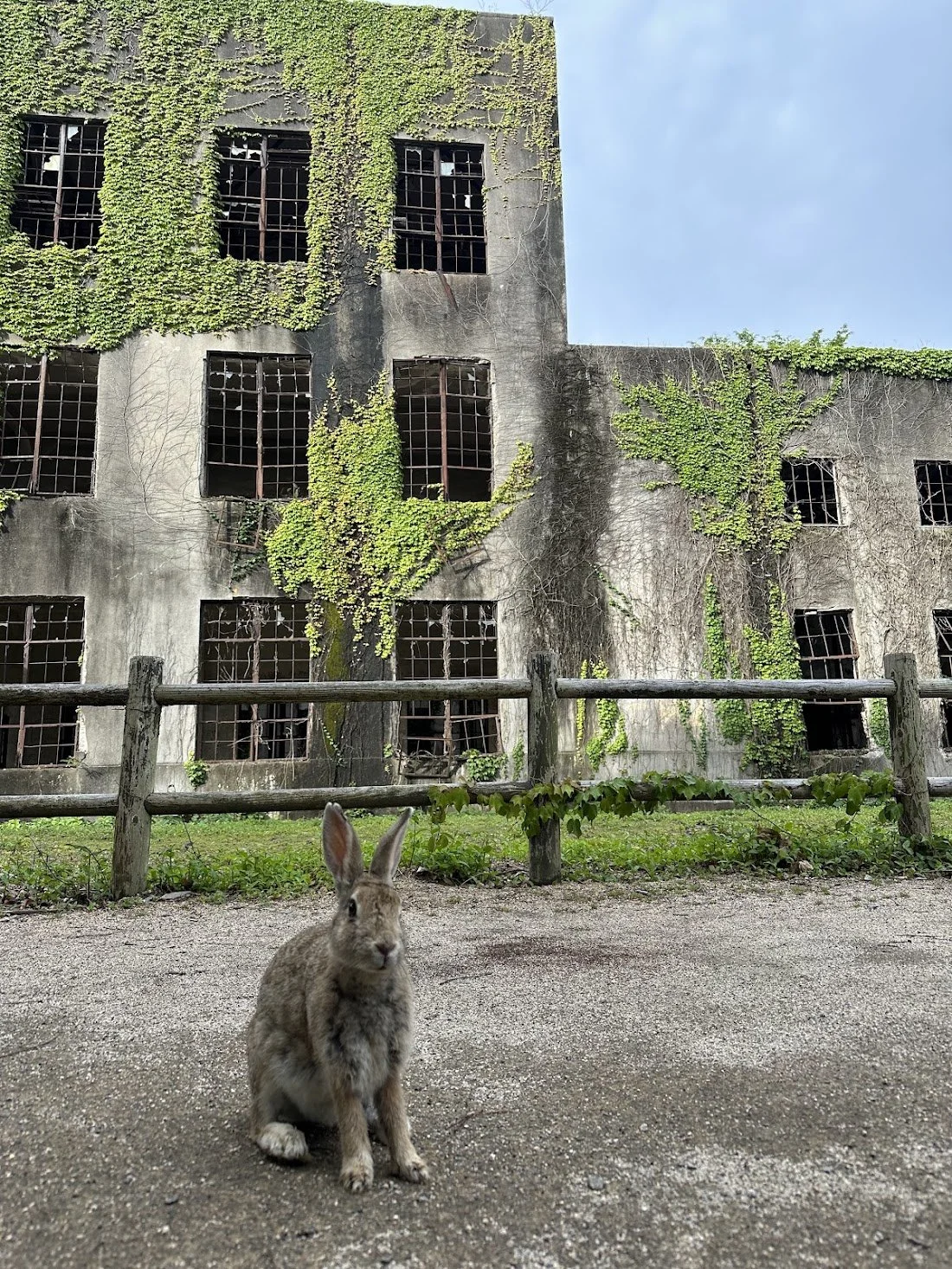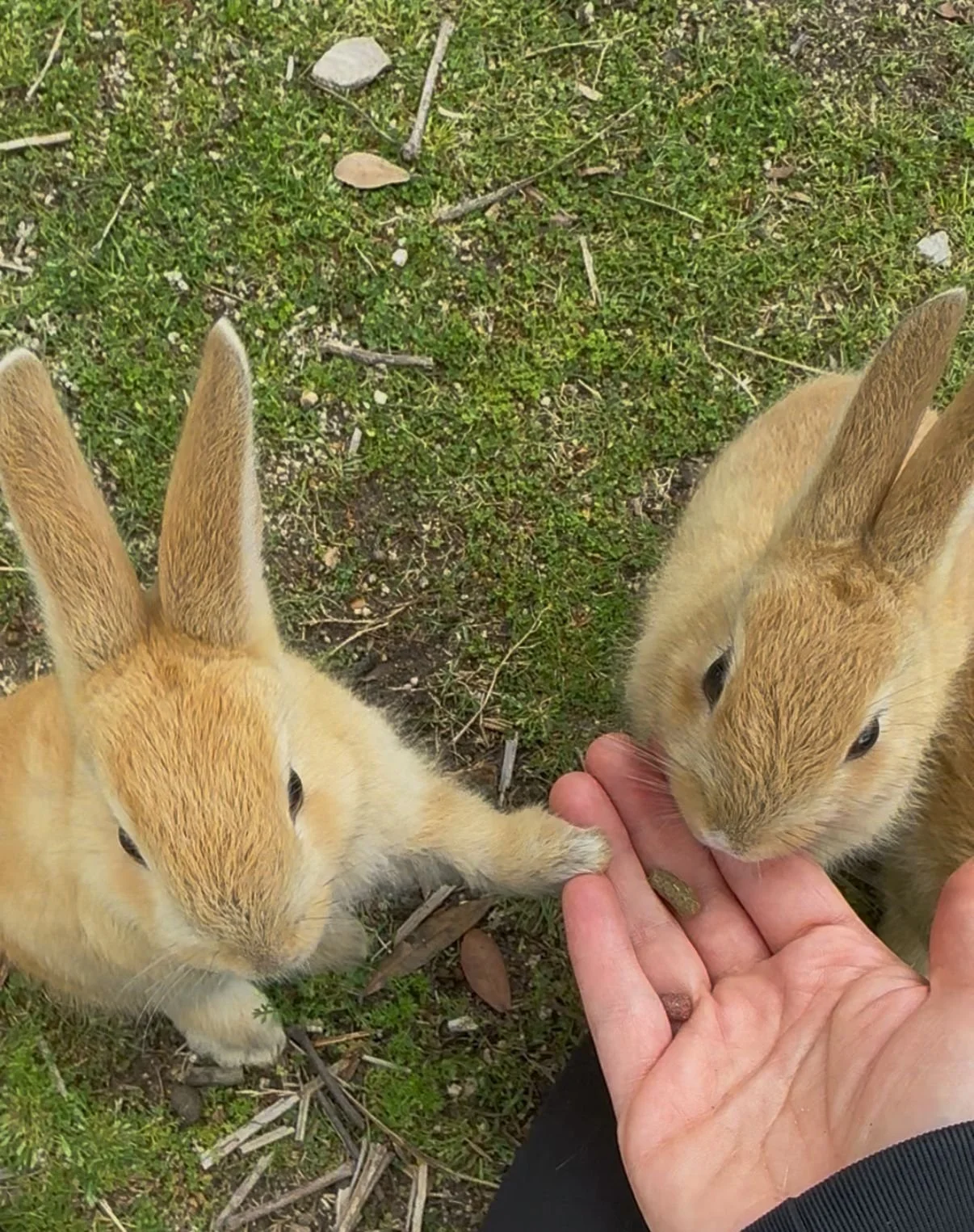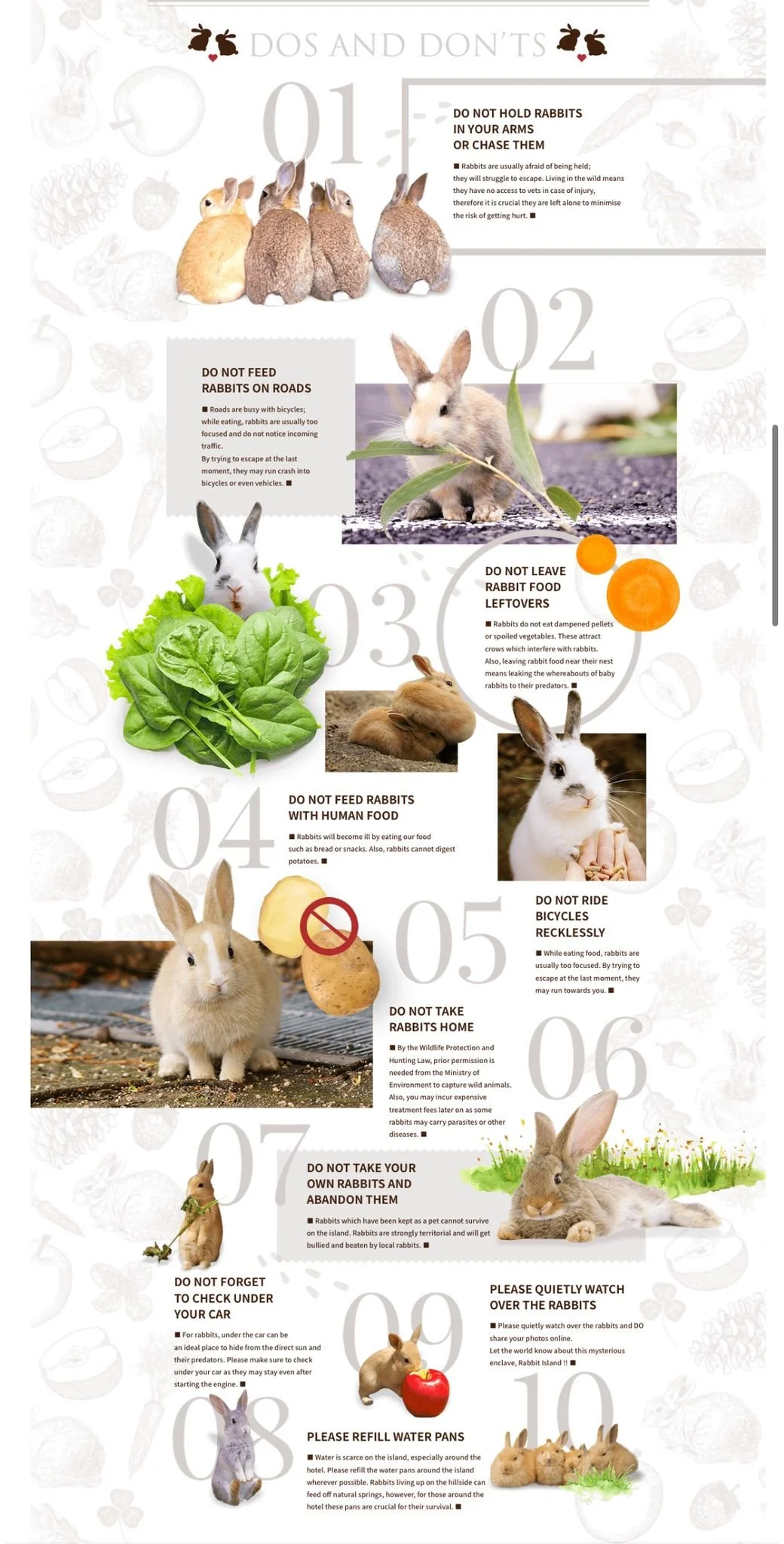Ōkunoshima The Island Where History and Fluff Collide
In the middle of the Seto Inland Sea lies a small green dot that was, for decades, invisible to the world. Ōkunoshima once carried no name on official maps. From the late 1920s to the end of the Second World War, it hid one of Japan’s darkest military secrets.
From Forts to Forbidden Industry
The story begins even earlier. During the Russo–Japanese War (1904–1905), Ōkunoshima was fortified as part of Japan’s coastal defense network. The war ended, the guns went silent, and the island returned to fishing and farming.
But in 1927, the Imperial Japanese Army selected this quiet, isolated island for something far more secretive: the construction of a poison gas factory. By 1929, the first chemical agents — including mustard gas — were rolling off the lines. Over the next 16 years, the factory would produce more than 6,000 tons of lethal chemicals, despite Japan having signed the 1925 Geneva Protocol banning such weapons.
The island’s location was ideal for secrecy: small, far from major cities, and easily controlled. The government erased it from maps, and even the workers often didn’t know exactly what they were making. Protective gear was inadequate; exposure left many with skin burns, lung damage, and blindness. Some never recovered. Many were later denied medical care because the program was officially “erased” after the war.
Silence, Ruins, and Reinvention
When Japan surrendered in 1945, Allied forces ordered the destruction of the facilities. Chemical stockpiles were buried or burned, and the factory was dismantled. The buildings — thick concrete shells — were left to weather in the sea air, slowly becoming part of the landscape.
In the 1960s, the government sought to reinvent the island as a national park and holiday resort. Pine trees were planted, walking paths laid, and the Kyukamura Ōkunoshima Hotel opened to visitors. The darkness of the past lingered quietly in the ruins — but then came an entirely different kind of invasion.
How the Rabbits Came to Rule
Contrary to a persistent myth, today’s rabbits are not the descendants of wartime lab animals. Those test rabbits were euthanized after the war.
Instead, the current population began in the early 1970s, when a small group of rabbits — most accounts say eight — were released on the island by local schoolchildren and resort staff. With no predators, no hunting, and a mild climate, the population exploded. Today, there are hundreds of them, hopping freely through forests, fields, and even across the hotel lawn.
They are impossibly cute — round bodies, big eyes, twitching noses — but they are also dependent on human visitors for much of their food. Without regular feeding, especially in winter, survival becomes difficult.
Visiting Ōkunoshima
Getting There
Most visitors arrive from Tadanoumi Port in Takehara City, Hiroshima Prefecture. From Hiroshima Station, take the JR Kure Line to Tadanoumi Station (about 2 hours, with stunning coastal views). The ferry terminal is just a 3-minute walk from the station — follow the bunny paw prints painted on the ground.
Ferry Schedule:
To Ōkunoshima: First ferry ~7:30 AM, last departure ~4:00 PM
To Tadanoumi: Last return ~5:30 PM
Duration: 15 minutes
Cost: ~¥360 one way
Ferries run every 30–45 minutes, but times vary by season — always check before your trip.
Essential Tip — Bring Bunny Food Before You Board
There is only one place to buy rabbit food: the small shop next to Tadanoumi Station, right by the ferry terminal. Once you’re on the island, there is no rabbit food for sale — not in vending machines, not at the hotel.
Bring pellets from the shop or fresh vegetables (carrots, cabbage) from elsewhere. The bunnies will love you for it. Avoid bread, sweets, or processed food — these can make them sick.
What to See
1. Poison Gas Museum
Small, inexpensive, and emotionally heavy. Displays explain the production process, the workers’ suffering, and the military’s secrecy. It’s the best way to understand the ground you’re walking on.
2. Abandoned Military Ruins
Concrete husks of the factory, power plant, and storage bunkers stand scattered across the island. Some are swallowed by pine forests, others stand stark and silent in the open.
3. Rabbits — Everywhere 🐇
They will run up to you. They will sit in the road until bribed. They will try to climb into your bag. Just remember: they’re wild, so handle them gently and respect their space.
4. Cycling the Island
The 4 km loop can be done in under an hour — or in three, if you stop for every rabbit. Bike rentals are available at the hotel and ferry terminal.
5. Beaches & Nature Trails
There are quiet sandy spots with views of the Seto Inland Sea — perfect for picnics, though expect furry visitors.
Staying Overnight
The Kyukamura Ōkunoshima Hotel offers comfortable rooms, ocean views, onsen baths, and buffet meals. Day-trippers can pay to use the onsen. Outside the hotel, there are no restaurants — just vending machines — so bring your own snacks if visiting for the day.
Best Time to Visit
Spring and autumn offer the best mix of mild weather and active bunnies. Summer can be hot and humid, with rabbits sheltering in the shade. Winter brings fluffier coats but fewer sightings.
Respect the Island
Feed only safe foods.
Don’t pick up or chase the rabbits.
Carry your trash back to the mainland.
Learn the island’s history before losing yourself in the cuteness.
Ōkunoshima is an island of contrasts — a place where chemical warfare and soft fur share the same soil. The ruins whisper of human mistakes. The rabbits remind you that life, against all odds, finds a way.
Remember the past. Learn from it. Feed the future.
Preferably with carrots ;)
Island website:
http://rabbit-island.info/en/



